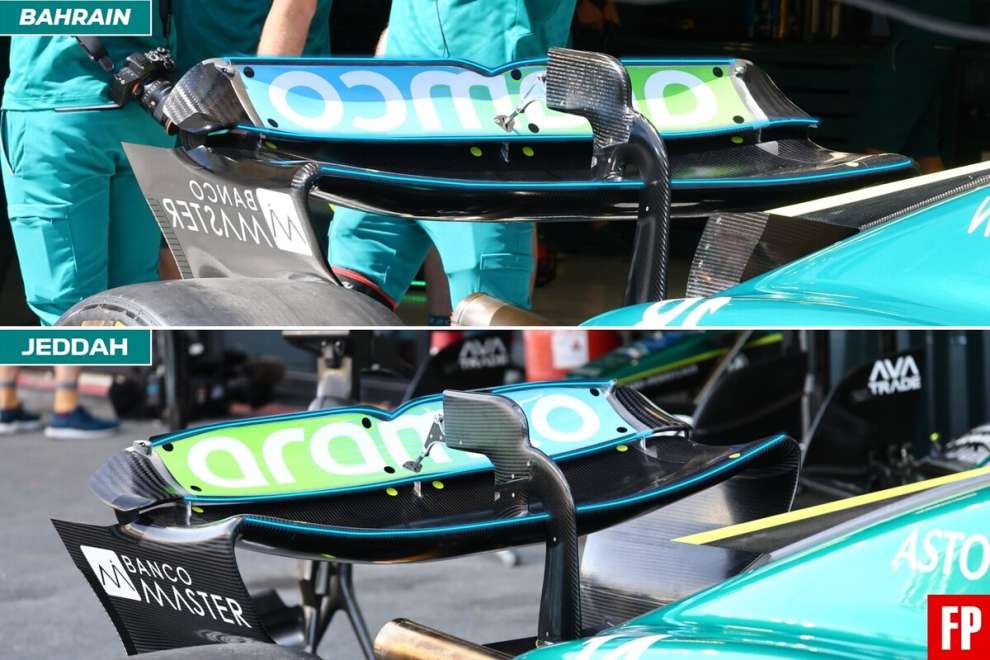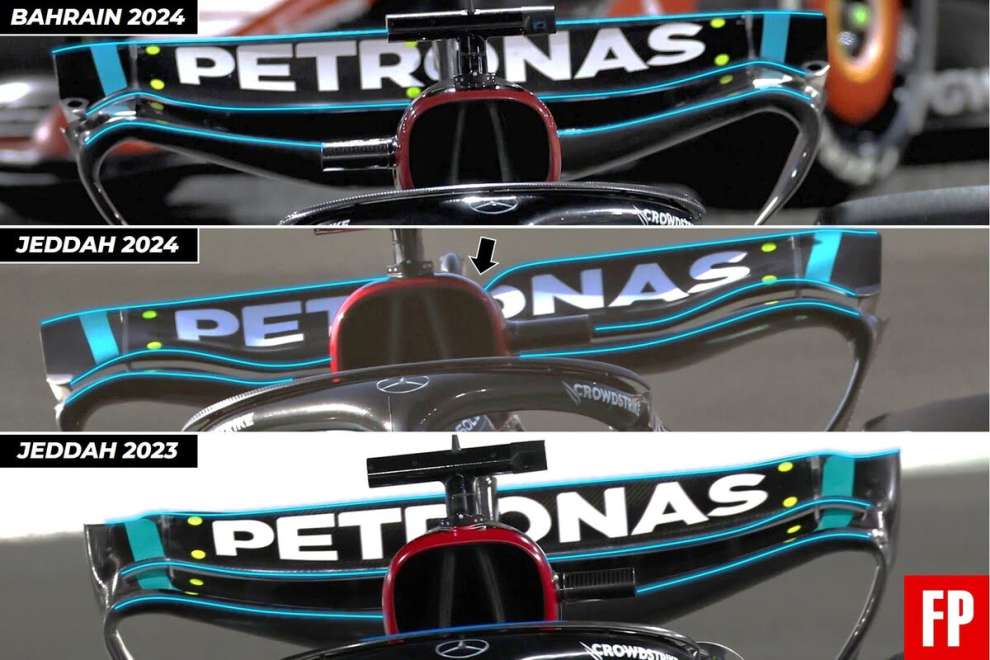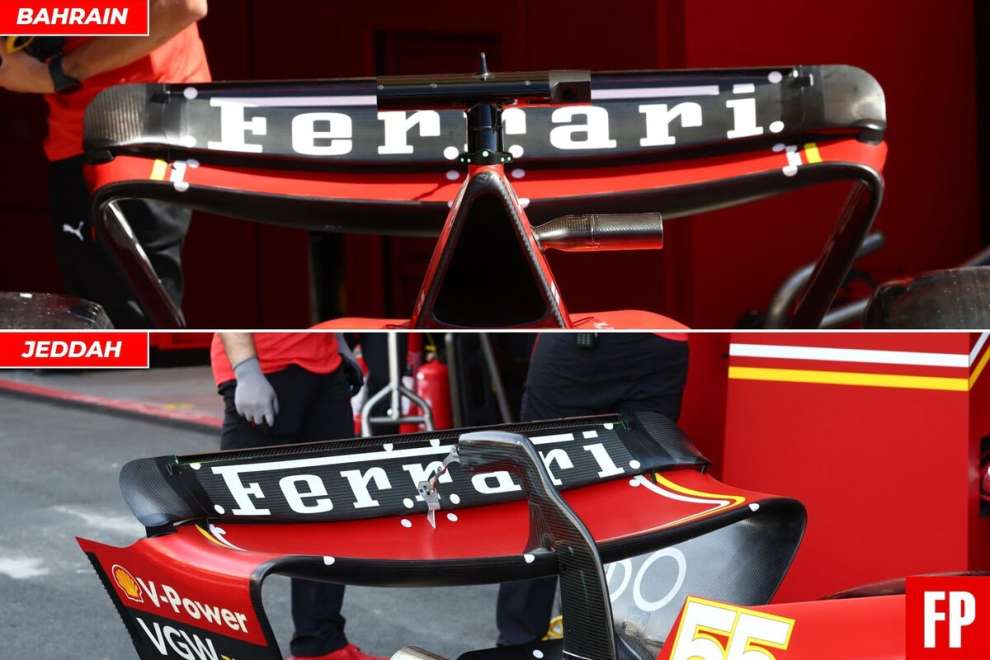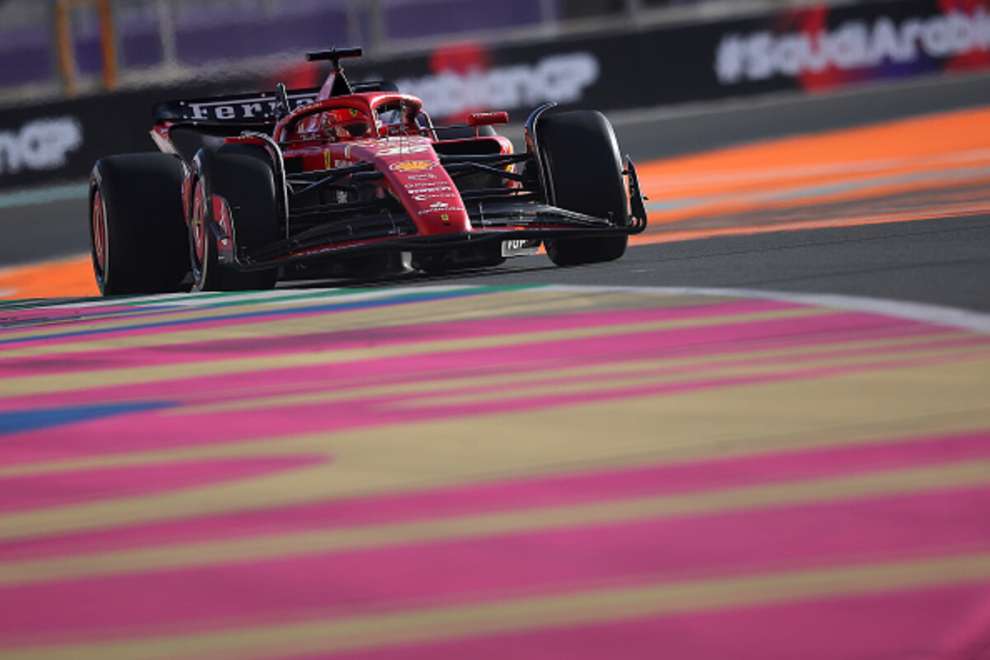By Carlo Platella
An intense Friday in Jeddah, with teams and drivers busy finding their feet on a highly technical track. In a constantly evolving picture and which will continue to change tomorrow as well, a clear favorite is struggling to emerge for qualifying, the only session in which the Verstappen-Red Bull duo appears attackable. The teams are preparing for a long night of work to look for that decisive tenth, with three areas above all at the center of attention.
1: the right load
Jeddah is a significantly smoother track than the one that hosted the opening stage, with an average lap of over 250 km/h in qualifying compared to 217 km/h in Bahrain. The high mileages require a medium-low aerodynamic load appearance, aiming to emphasize efficiency to navigate the bends without getting stuck on the straight. As expected, several teams showed up in Saudi Arabia with a different wing configuration compared to the one mounted in Bahrain.
This is the case of Red Bull, which sports a visibly flatter rear wing. Even more important is the configuration chosen for the beam wing, which goes from double to single profile, weakening the work of the speaker and thus also reducing the load and resistance generated by the bottom. Also Aston Martin brings to Jeddah a new wing for the occasion, lighter than the one used in Bahrain and characterized by a spoon-shaped main profile.


It's no different McLaren, which features a wing already seen in the finale of last season. Those who are even more aggressive are Mercedes, which relies on a straight wing concept used on some of the most unloaded tracks throughout the second half of 2023, such as Monza or Las Vegas. The comparison with the powerful wing mounted in the last edition of the Arabian Grand Prix is emblematic of how much the new Silver Arrow is now able to run closer to the ground than its progenitor, generating sufficient load from the bottom and thus being able to do without of inefficient ailerons.

Ferrari surprise
Maranello is among the leading teams the only one not to have a flatter wing compared to the opening stage. Ferrari said it had an aileron inherited from the SF-23, as well as a more low-profile single-profile beam-wing, but neither of these were seen on the Reds on Friday in Jeddah. It is difficult to establish whether the Cavallino has not yet created a dedicated wing, preferring to give priority to other development objectives, or whether it is a deliberate choice of structure.

In fact, it is possible that in Maranello they opted for a greater load to stabilize the rear axle, preventing it from breaking down during rapid changes of direction, in which it instead needs to follow a well-aimed front. Not to be ruled out that Ferrari is aiming to do things for 2024 greater reliance on the bottom to regulate the load level through the management of heights from the ground. Precisely this remains the main tool available to all teams to calibrate the right level of load in view of qualifying, a crucial decision both for the fight for pole and for managing the race pace.
2: rebounds to check
The uneven asphalt of Bahrain gives way to the level one of Jeddah, inviting the teams to lower their heights from the ground to make the most of the load released from the bottom, which is more efficient than that generated by the wings. The cars thus return to impact and bounce against the ground, especially in the bends of the first sector and when climbing the curbs positioned at the exit. In Arabia the problem is common to all teamswith recurring complaints from pilots.
The problem of bounces is not just a problem of comfort, but it affects the driver's confidence, which is extremely important when it comes to skimming the trackside walls at over 250 km/h. Evaluating ground clearance and rebound management will be another topic of great attention in the preparation for qualifying, strictly linked to the choice of load level. In fact, raising the car would lead to a loss of load from the bottom, which would have to be compensated for with different wings.

3: the snake
The sequence of fast corners in the first sector is the characteristic feature of the Saudi track, as well as the most challenging where you can make a big difference. On the eve of the day it was expected that McLaren could be competitive in the first stretch, after in Bahrain it had shown signs of once again having a well-balanced car in rapid changes of direction. Yet, in free practice in Jeddah neither Norris nor Piastri shone in the first sector, highlighting some work to be done at McLaren.
Even in the Mercedes garage there is still a lack of full satisfaction. Lewis Hamilton complains about a rear that is too light, finding confirmation in George Russell who talks about a highly unstable car in high-speed corners. The times of the day would seem to indicate Aston Martin and Fernando Alonso as the most incisive in the initial snake, but the race pace simulations actually reveal how the references in the first sector are Ferrari and Red Bull.

However, not even Verstappen is yet fully comfortable in the car. The world champion struggled for a long time with an understeering car in the medium-speed corners, a situation that then improved during the evening session. The Dutchman accuses anyway still some difficulties in the final hairpinwhere he is unable to bring enough speed to the apex, an issue that Red Bull will have to address ahead of Saturday.
The value of qualifications
Qualifying promises to be particularly balanced and potentially even more important than the opening weekend. The straights of Jeddah offer overtaking opportunities, as seen in the past, but the increasingly sophisticated aerodynamics of the single-seaters make difficult to follow closely along the curves of the first sector, hindering the comeback from the rear. The exception is Red Bull, which at the moment however seems to have a smaller advantage compared to the monstrous superiority of 2023, but still sufficient to recognize its role as favorite for the final victory.
#Arabia #work #progress #areas #pole #decided